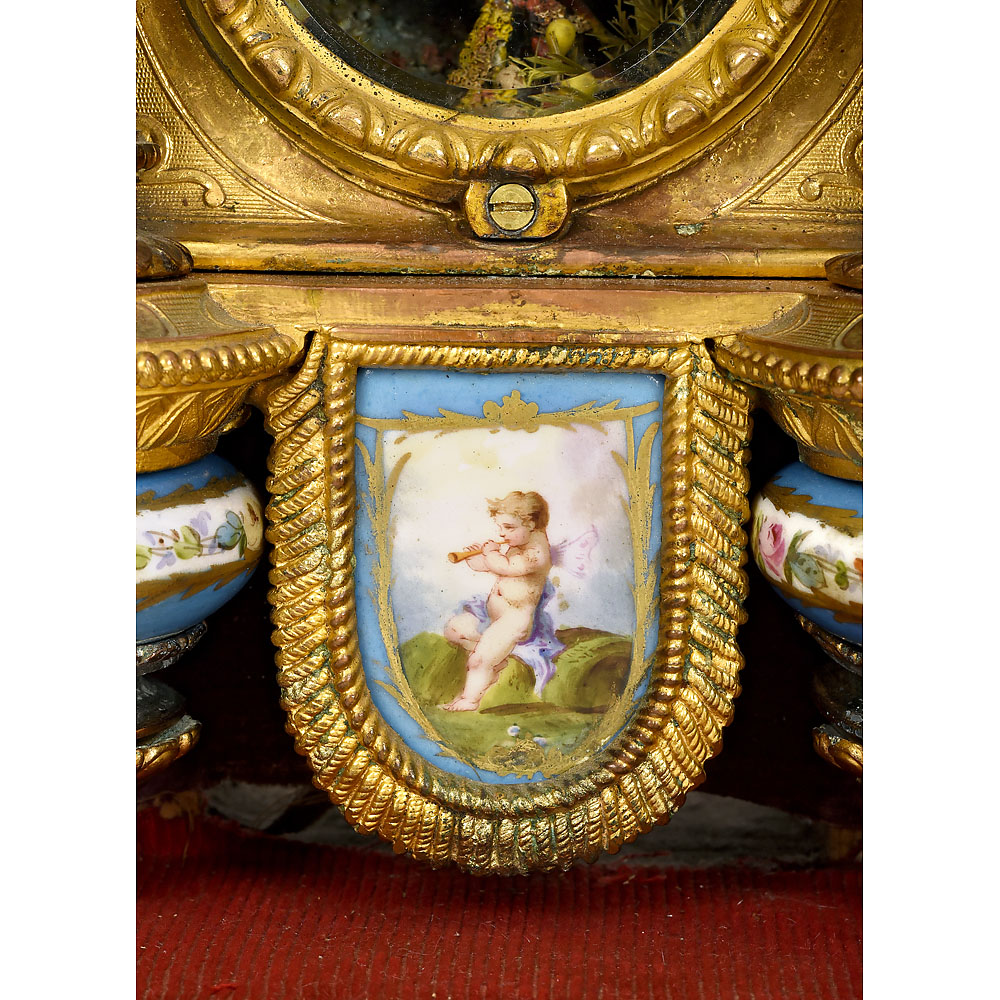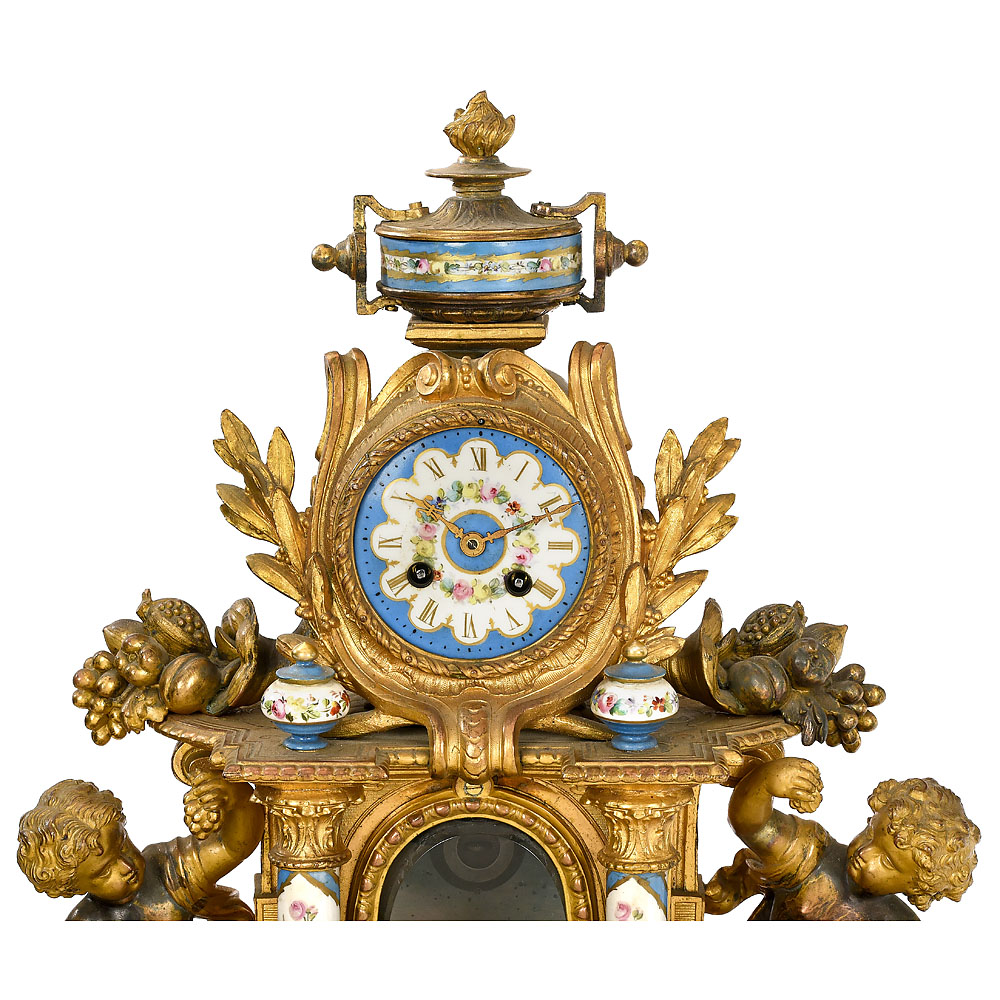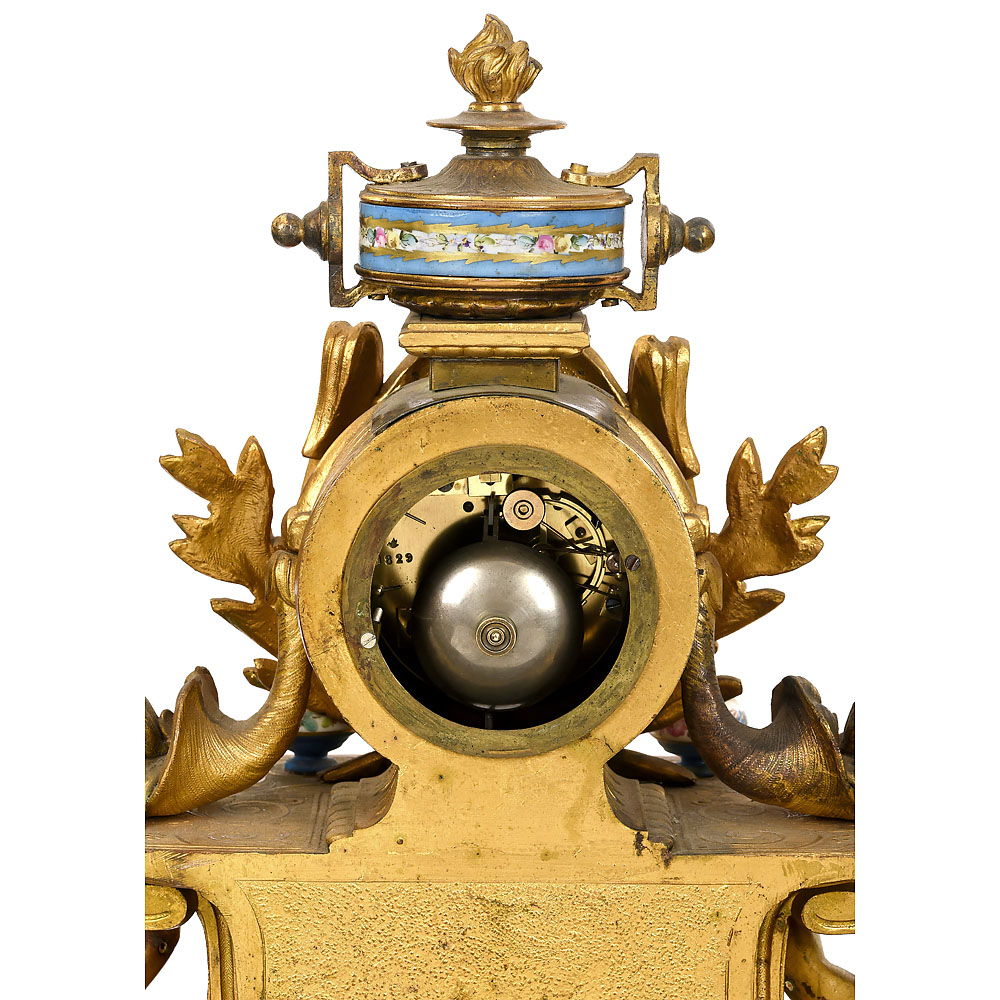Rare Ormolu Singing Bird Automaton Clock by Blaise Bontems, c. 1885
Starting bid: € 5.600 | Estimate: € 10.000 – 15.000
With two-train clock movement by S. Martie et Cie, no. 1829, with “bird” and “Médaille de Bronze” stamps, striking hours and halves on bell, 3 3/4–inch (9 cm) porcelain dial with Roman numerals, ormolu case with Sevres-type porcelain mounts decorated with floral sprays and garlands in turquoise-blue borders, the glazed central section housing automaton bird with iridescent plumage, swiveling perch, articulated wings, metal beak and tail in wild enclosure of flowers and ferns, on carved giltwood base with going-barrel movement, bellows and whistle, bird approx. 1 ½ in. (3 cm), overall ht. 27 in. x wd. of base 23 ½ in. (69 x 60 cm), overall good, working condition, one metal mounting split, small chip on reverse of left porcelain column, with 11 ¼ in. (29 cm) key. – Note: Gilt-bronze singing bird clocks decorated with porcelain panels appeared in the upper price bracket of the Bontems’ catalog. – Literature: Bailly, “Flights of Fancy, Mechanical Singing Birds”, pp. 297, 328. – The flamboyant sculptural case, featuring putti sporting grapes, goblet and panpipes beneath cascading cornucopia, is the only example of its type that we have seen to date. The themes of music, revelry and abundance are continued in the porcelain panels of the lower section, which depict two urns and a putto piper. The automaton is independent of the clock movement. The bird turns from side to side and flutters its wings and tail (beak movement inactive) as it sings. The case is in original condition, with a pleasing patina that would benefit from light cleaning. A rare and remarkable automaton clock.
Seltene Ormolu-Singvogel-Automatenuhr von Blaise Bontems, um 1885
Mit zweizügigem Uhrwerk von S. Martie et Cie, Nr. 1829, mit “Vogel”- und “Médaille de Bronze”-Prägung, Stunden- und Halbstundenschlag auf Glocke, großes Porzellanzifferblatt mit römischen Ziffern Ø 9 cm, Ormolu-Gehäuse mit Sevres-Porzellanbeschlägen, verziert mit Blumenranken und Girlanden in türkisblauen Bordüren. Der glasierte Mittelteil beherbergt einen Vogelautomaten mit schillerndem Gefieder auf einer schwenkbaren Sitzstange, mit beweglichen Flügeln, beweglichem Metallschnabel und Schwanz, in einem wilden Gehege aus Blumen und Farnen, auf geschnitztem Goldholzsockel mit Federwerk, Blasebalg und Pfeife, Vogel ca. 3 cm Höhe, Gesamtmaße 69 x 60 cm, insgesamt guter, funktionsfähiger Zustand, eine Metallhalterung gespalten, kleine Abplatzung auf der Rückseite der linken Porzellansäule, mit Schlüssel. – Singvogeluhren aus vergoldeter Bronze, die mit Porzellanplatten verziert sind, erschienen im oberen Preissegment des Bontems-Katalogs. – Literatur: Bailly, “Flights of Fancy, Mechanical Singing Birds”, S. 297, 328. – Das extravagante skulpturale Gehäuse mit Putten, die Trauben, Kelch und Panflöte unter einem Füllhorn tragen, ist das einzige Beispiel seiner Art, das wir bisher gesehen haben. Die Themen Musik, Fest und Überfluß setzen sich in den Porzellanplatten des unteren Teils fort, die zwei Urnen und eine pfeifende Putte darstellen. Der Automat ist unabhängig vom Uhrwerk. Der Vogel dreht sich von einer Seite zur anderen und flattert mit den Flügeln und dem Schwanz (Schnabelbewegung inaktiv), während er singt. Gehäuse Originalzustand, mit einer angenehmen Patina, die von einer leichten Reinigung profitieren würde. Eine seltene und bemerkenswerte Automatenuhr.







